Riki Taki Dominicano
Dominican street food is, like the street food of many Latin American cultures, a grab bag of influences from many cultures that have lived on the island of Hispaniola over the centuries. Vendors hawk local versions of empanadas, chicharrones, and johnnycakes; preparations of plantain and yucca; skewered meats cooked over a grill; fresh-caught fish fried whole; colorful tropical fruits–or drinks made from those fruits–and more unique fare such as quipes, balls of bulgur dough stuffed with ground meat and deep fried–a local version of kibbeh brought to the island by Lebanese immigrants. Of course, there are also sandwiches. One of them, the Dominican burger variant known as a Chimichurri (or Chimi for short) we covered in 2020. Today we look at another: Riki Taki.
On the surface the Riki Taki seems similar to the Chimichurri–ground beef served in a roll with cabbage, tomato, mayonnaise and ketchup. The Riki Taki uses loose, seasoned ground beef rather than a patty though. Some sites I have seen refer to it as the “Dominican Sloppy Joe,” but most of the recipes I’ve seen don’t use a thick sauce to bind the meat together. Rather, it is simply seasoned, loose ground beef, like a Maid Rite or Tavern sandwich, one of the “Tendermaid” hamburgers we tried in Minnesota, or even the ground steak sandwiches of Mt. Airy, North Carolina. Like that sandwich, the Riki taki’s seasoned ground beef is topped with shredded cabbage–sometimes a coleslaw-like cabbage-based condiment called curtido but often simply plain thin slivers of cabbage–and sliced tomato.
The similarity ends there. Where Mt. Airy’s sandwich is served in a simple hamburger bun, the Rikitaki is served in a crusty oval roll called pan de agua (though sometimes it is served in a crusty round type of pan de agua instead).
Onion is often added, pickled as often as not. The cabbage and tomato are dressed with mayonnaise and ketchup or sometimes a combination of both sauces called salsa rosa or pink sauce. Halves or slices of boiled egg are added as well. And finally, the sandwich is pressed like a panini, leaving a crisp outer crust, inundating the bread’s crumb with a combination of tomato juice, beef fat, mayonnaise and ketchup, combining all the ingredients into a steamheated melange of, well, all of the above.
It’s difficult to say whether a soft roll like a hamburger bun would stand up to this. Pan de agua is sturdier than that though, a nicely browned, crusty exterior with a strong crumb. This recipe (with a couple hundred grams of sourdough discard added) made enough dough for six oval rolls and six smaller round ones.




The oblong rolls may look a little lopsided, with a larger half and a smaller, crescent-moon-shaped half, but that is in fact the canonical shape of the bread.
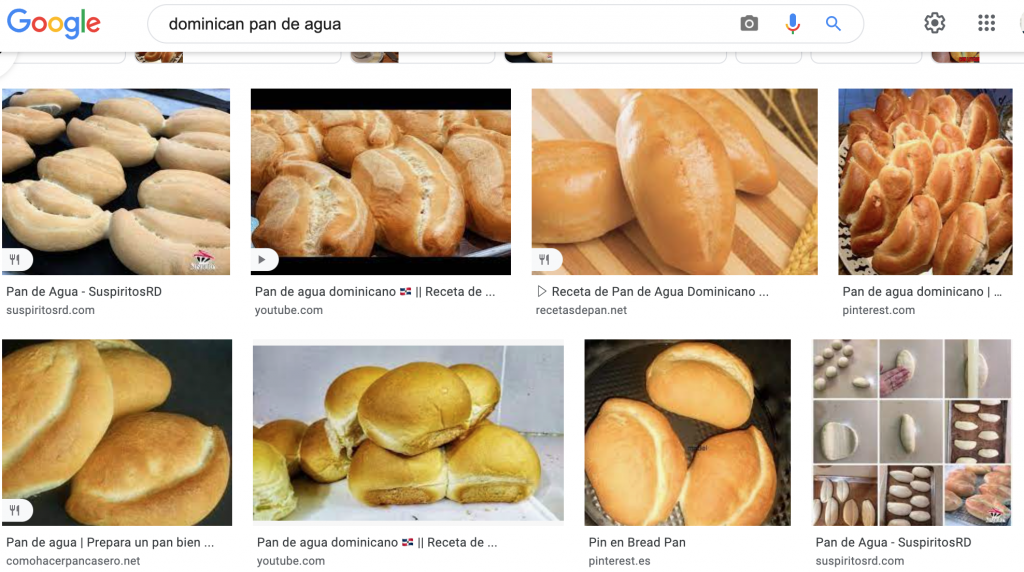
The ground beef filling for this sandwich has few English-language recipes outside of the simple, omnipresent version at an Arizona-based Dominican recipe blog called Belqui’s Twist. Her version seasons the meat simply with Adobo seasoning and citrus juice. Spanish language versions sometimes keep it simple like that, but some of them add oregano, Sazon, tomato sauce, or even olives to the ground beef mixture. Most of them however keep the ground beef mixture relatively simple and unsauced. I split the difference, browning the meat in a pan, seasoning it with a generous shake of adobo seasoning, some dried Mexican oregano, lemon juice, tomato paste, and just enough chicken stock to help all those flavors coat each bit of meat.
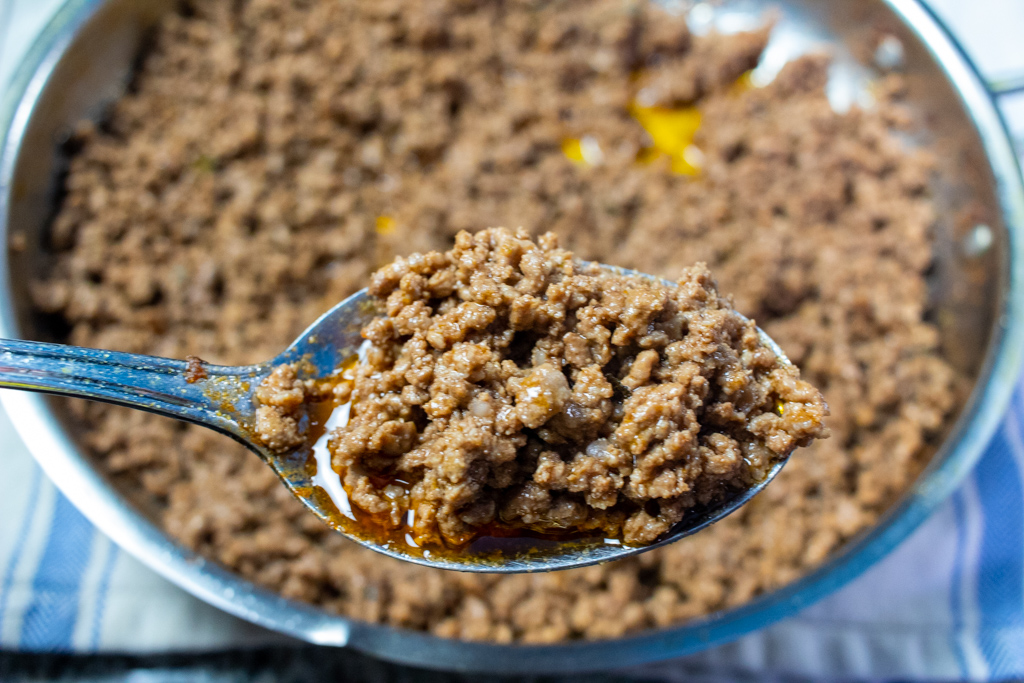
For the cabbage, I sliced it thin, salted it, let the salt draw some moisture for a few minutes, then dressed it with a small amount of white vinegar and olive oil. I made a quick pickle with half a red onion and a pinch of kosher salt along with a 50/50 mix of water and vinegar to cover. I boiled the eggs. I sliced the tomatoes.
It was time to make some sandwiches.
Riki Taki








Starting with the sliced pan de agua roll, first I put on a layer of ground beef, then some cabbage, a little bit of pickled onion, sliced tomatoes seasoned with sea salt, ketchup and mayo, and finally two halves of a boiled egg. Then I closed the sandwich with the top half of the roll and put it in the sandwich press for a few minutes.


I’m as surprised as you are, perhaps more so, to find that this is an excellent sandwich. The relatively thin layer of beef is mostly retained by the bread roll, minus a few stragglers finding their way onto the sandwich press surface or the plate. The savory beef and egg combination is accentuated by umami flavors from the tomatoes and the sauces. The sweetness of the ketchup plays off the sour and salty bite of the pickled onion very nicely. The cabbage presents a little textural variance, a crisp fibrous matrix that helps retain what moisture hasn’t been soaked up by the sturdy bread roll. It all holds together very well, and I like it even better than I liked the Dominican chimi burger I made in 2020.







Next I tried it with a round roll, toasting the bread first with a little garlic butter before assembling the sandwich. If anything, this was even better.

The flat slices of egg were a better structural choice on this smaller, rounder roll, allowing all the layers of ingredients to lie flat. The toasted surface of the bread roll was less yielding, so this roll did not swaddle the ingredients quite as well as with the previous sandwich, and you can see that we did lose some of the beef in the press.

Not as much as you might expect, though, and once again the sandwich held together very well after pressing.




I tried the sandwich again with the oblong version of the pan de agua, pretoasting it in the sandwich press like I had with the round roll.







Toasting the pan de agua in the sandwich press resulted in some compression of the bread before even assembling the sandwich, whereas the round roll had withstood the press better. Did I press down harder? I don’t think I did. Perhaps the crumb was tighter on the round rolls, or maybe the irregular shape of the pan de agua made it more susceptible to squishing. In any case, the top bun balanced precariously upon the uneven mound of deliciousness below.
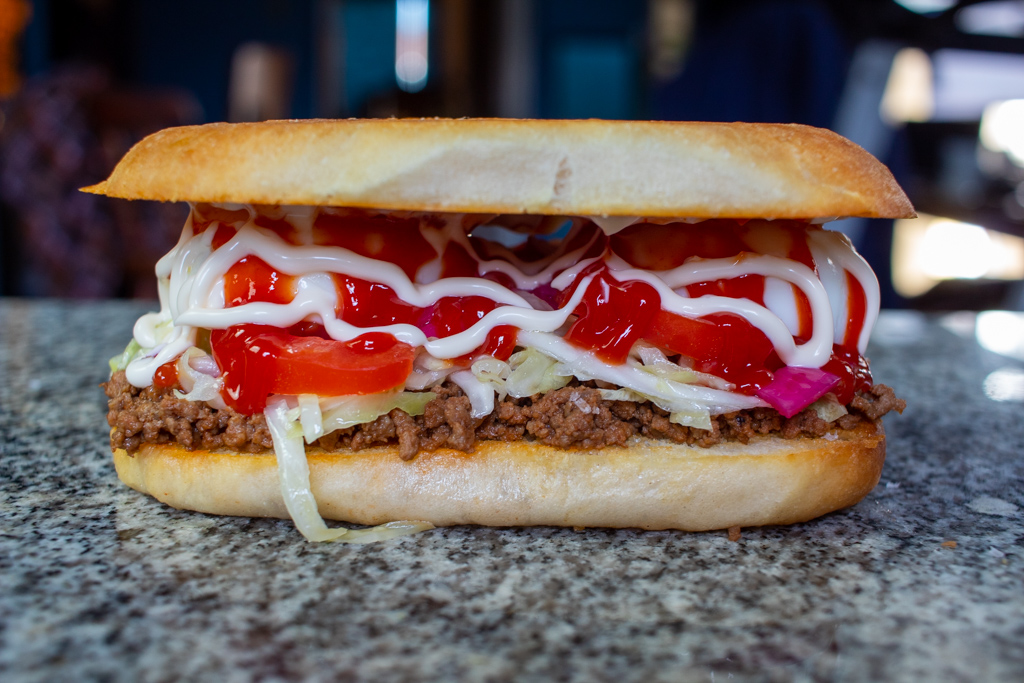
Once pressed, it was slightly less precarious. However, this came together less harmoniously than the other versions of the sandwich had, and was the sloppiest of the three I’d made so far.
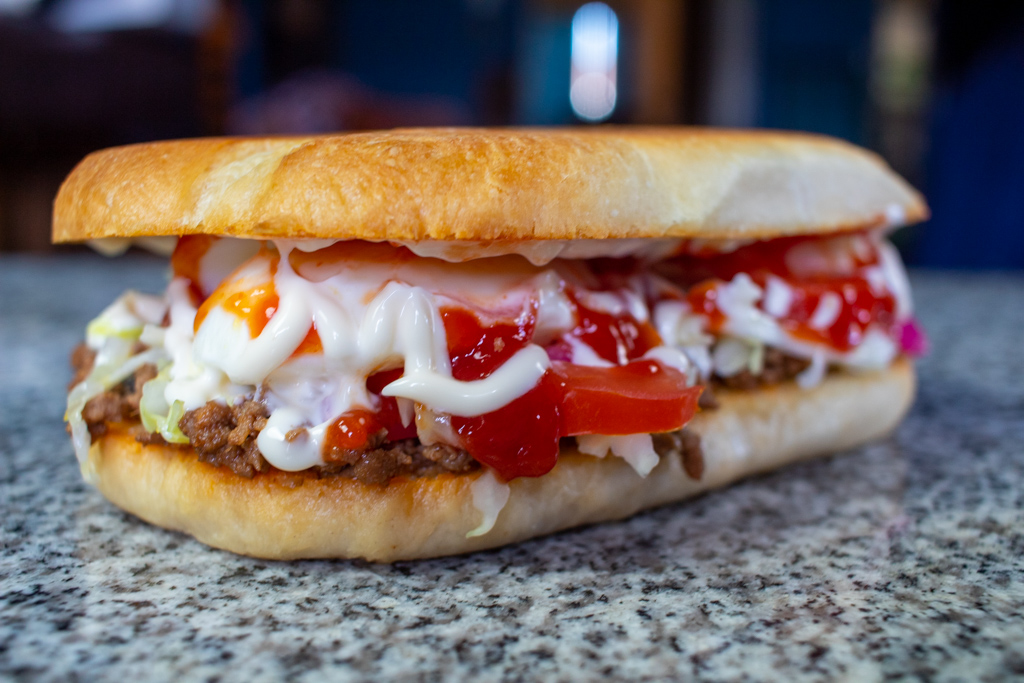
Frikitaki
Some recipe videos for the sandwich on Youtube call it Frikitaki. A search for Frikitaki though yields mixed results. There once was a Latin news & media website of that name, now defunct, whose social media presence–or absence I suppose–still haunts Facebook. There are a number of Latin music videos (including one that appears to be wrapped in a gag advertisement for a male performance enhancing supplement) for songs called Frikitaki or by artists called Frikitaky.
Then there are the sandwich videos. All of the above, both music and food, are generally in Spanish, which I don’t speak but can recognize the occasional word if it’s spoken veeeeerrrrrry sllloooooooowwwwwwly. These videos are by fluent, native Spanish speakers and I have no hope of keeping up. The music does not appear to be related to the sandwich at all. The sandwich videos, though… is it a legit variant of the sandwich, or just a funny name for it that some people use?
Maybe a little bit of both, but one pattern I did notice with the food videos labeled Frikitaki is that they tend to use some substitutions, commonly some type of salami, probably Dominican salchichon, in place of the ground beef. Many of them add cheese. They almost universally go with a sunnyside-up fried egg instead of the sliced, boiled egg. And few of them actually press the sandwich.
Dominican salami is a cooked, smoked sausage, similar to a summer sausage or a more coarsely ground forcemeat like German Jagdwurst. It is commonly cut into thick slices and pan-fried, and that is in fact how the Frikitaki-making Youtubers have generally prepared it as well. As for the cheese, according to this Youtuber, use whatever cheese you wahnt, and as much as you like. Among the most popular of cheeses in Dominican Republic is something called Geo, which is similar to Edam.
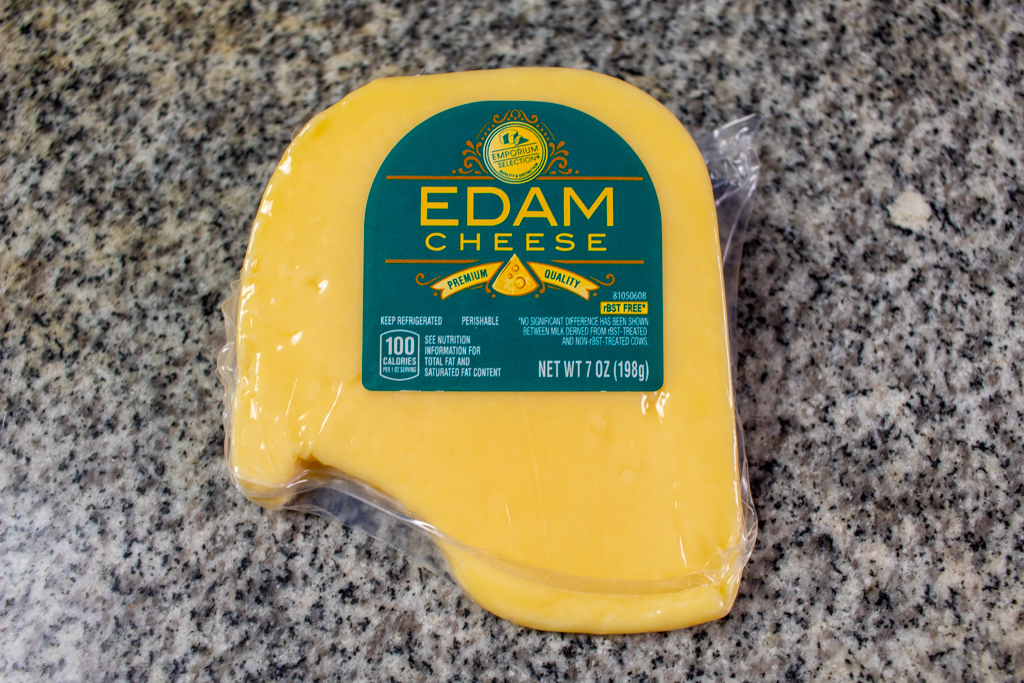
Time constraints (read: sheer laziness) prevent me from sourcing either Dominican salami or Geo cheese, so their parts today will be played by summer sausage and Edam.






I take back what I said about the previous sandwich being the sloppiest–this one was worse. The missing step of pressing the sandwich had done a lot to bind everything together in previous renditions of the sandwich. Still as you can imagine, fried salami, egg, and cheese, with pickled onion–the cabbage, tomato, and sauces are almost an afterthought at that point.
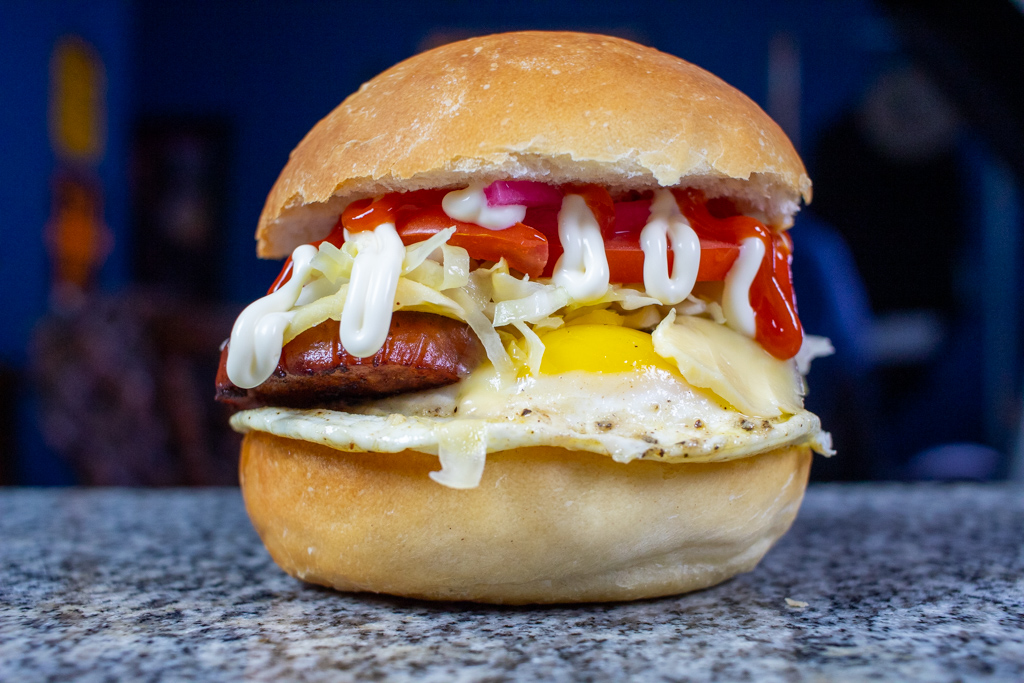
The fried salami has a crisp bite and some sour fermented character, complemented by the pickled onion; the yolk of the sunnyside-up egg gushed out the side of the sandwich as soon as it was picked up; the ubiquitous Dominican combination of shredded cabbage with tomato, mayo, and ketchup was a fine accompaniment but this could have used some mustard as well. Regardless, it was as delicious as it was sloppy and made a fine breakfast this morning.
If there are any Dominicans out there reading, or people who are more familiar with Dominican culture than I am, please let me know how I did. I want to make sure I’m not misrepresenting this sandwich. Wrong or right, what I made was pretty damn tasty.
@sandwichidiot Dominican Riki Taki #rikitaki #loosemeat #loosemeatsandwich #sandwichtribunal ♬ original sound – Jim Behymer

I like sandwiches.
I like a lot of other things too but sandwiches are pretty great











Recent Comments